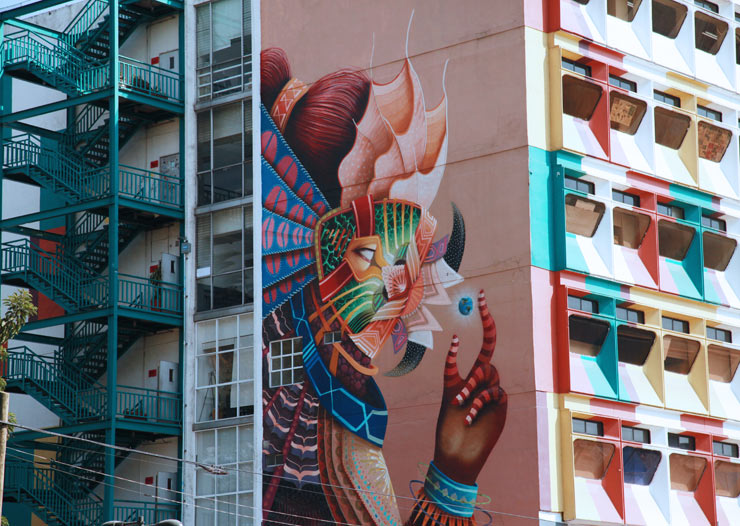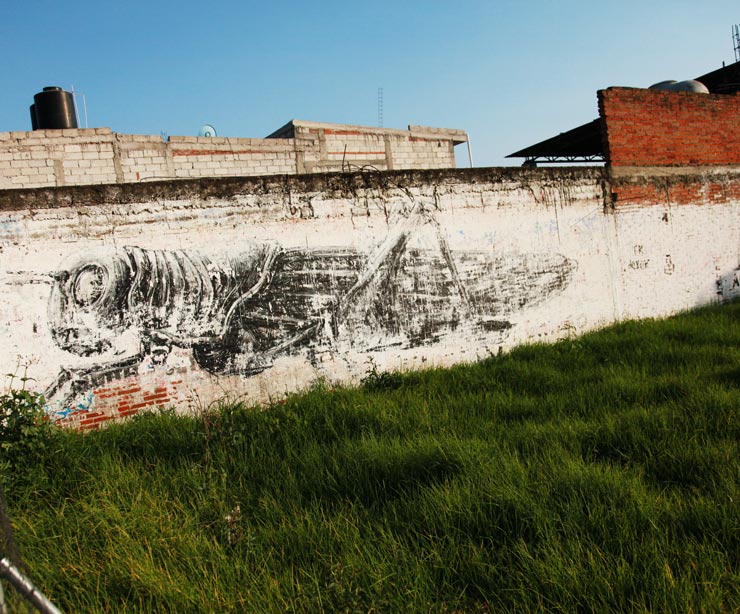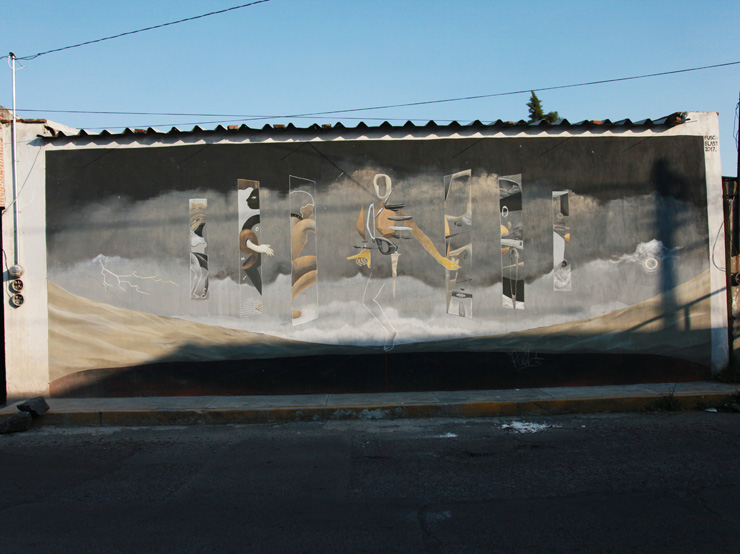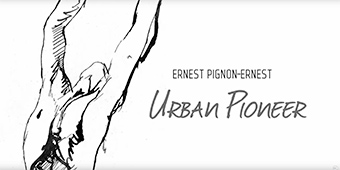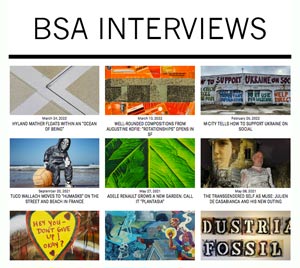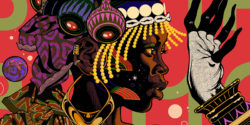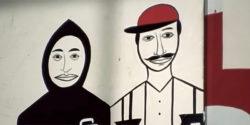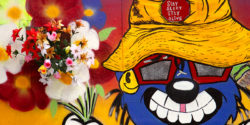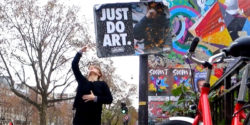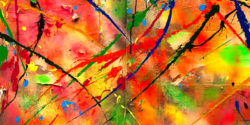Every city has its own particular energy; it’s own articulated rhythm, its own unique chaos.
Mexico City’s is full of flourish and aspiration and fascination for the international new, while firmly rooted in respect for the past. When it comes to Street Art, murals, graffiti and discordant sub-cultural art movements that can disrupt the norm, this city shows the capacity to absorb and adapt and to continue moving forward, providing meaningful insights into the true nature of its people.
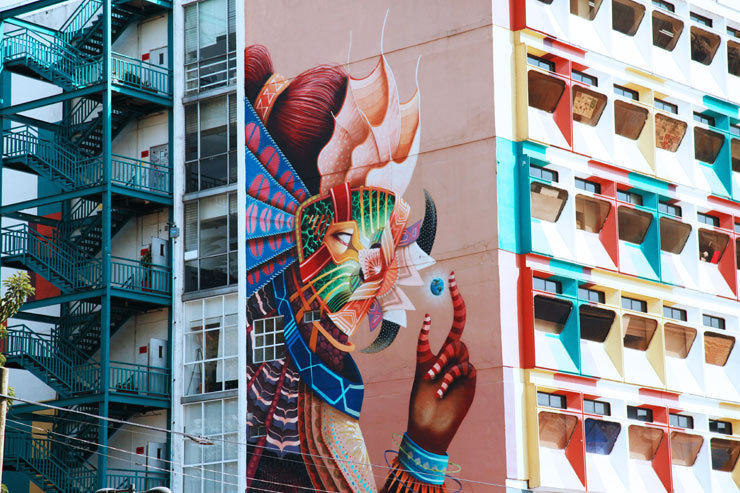
Curiot. Detail. For Lienzo Capital Project with Street Art MUJAM. (photo © Jaime Rojo)
This magic city of more than 20 million is often referred to as a gateway to Latin America: economically, socially, and politically. With high tech industry, banks, multi-national companies, a university system that serves 300,000 students, 150 museums, three UNESCO World Heritage sites… you can see why. With heavy traffic despite a subway system and many forms of public transportation, it can take hours for you to cross Mexico City (Distrito Federal (D.F)) and you can be assured that you’ll probably never see all 16 boroughs.
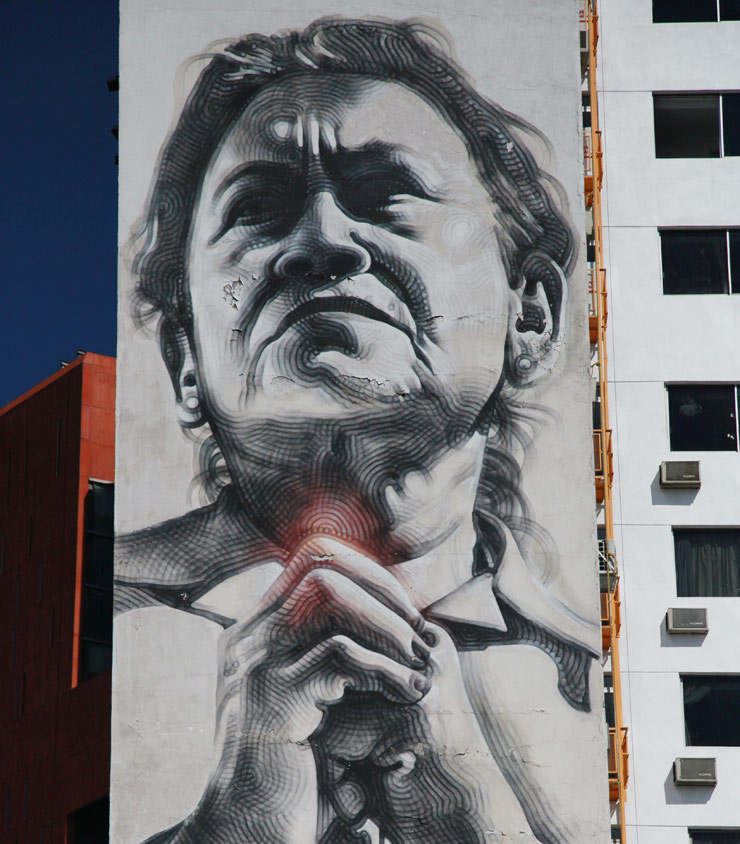
El Mac. Detail. All City Canvas 2012. (photo © Jaime Rojo)
As Street Art and its associated movements move through Central and South America, invariably D.F. appears as an important tierra cultural to traverse. From an active graffiti scene and occasional mural festivals to a growing gallery representation and increasing museum interest, urban artists are capturing the attention of the Americas, making heads spin in public space. With Mexico City capturing nearly all the aspects at once, today we take a look at the city and give you only a few examples of the art in the streets here.
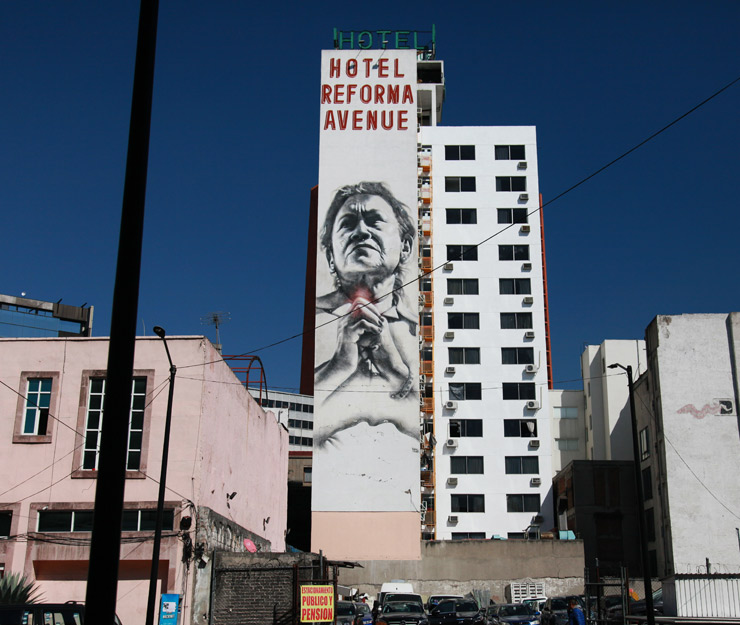
El Mac. All City Canvas 2012. (photo © Jaime Rojo)
The September 19th earthquake of 2017 shook Mexico City exactly 32 years after 10,000 lost their lives in a larger one, the largest. With broken sidewalks and taped off buildings still as physical evidence, you can hear in the voices the trauma that rocked tall buildings back and forth like huge ships on the sea. In addition to these more physical shocks, the city has been rocked in recent years by a rising evidence of frightening power shifts relating to drug traffickers, accusations of institutional corruption, and a sharply rising economic inequality that is transforming developing/developed societies across the globe.
Built upon the ruins of the Aztec city called Tenochtitlán, which was one of the worlds largest in the 15th century, Mexico City appears persistently ebullient when banding together against adversity. Determined to excel beyond the horrors of conquest by the Spanish that decimated an entire indigenous culture, still the ruins rise above the ground and this multi-hued global city rumbles forward with determination.
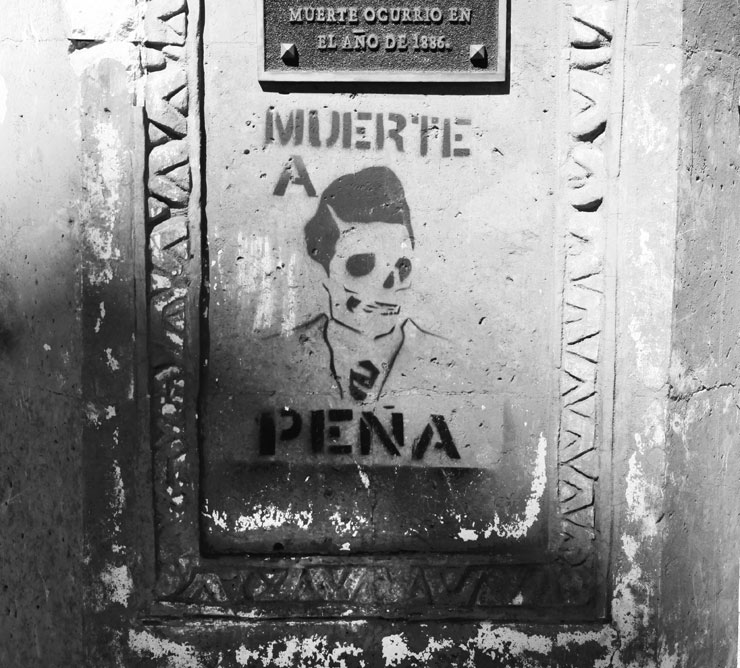
Unidentified Artist (photo © Jaime Rojo)
Sleek high rises and brightly patterned folkloric art and aerosol sprayed graffiti tags next to massive murals all blend and swirl like the jarabe Tapatío hat dance from block to block – a decisive commixture of the “brand new” with a heritage of indigenous/invader cultures that ruled here hundreds of years before. Today it’s a hybrid of purposeful optimism and wizened survival instincts that pushes the city forward, despite the shocks endured.
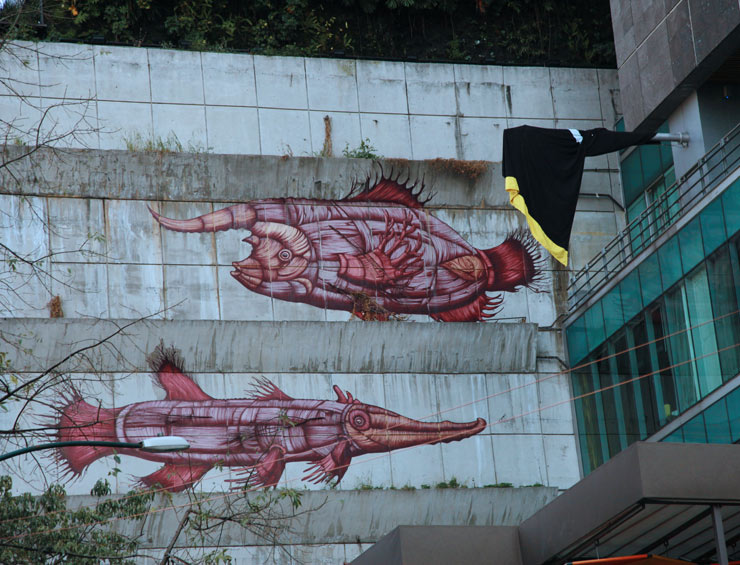
SEGO. All City Canvas 2012. (photo © Jaime Rojo)
The magic and realism so famously combined by authors like Garcia Márquez and Esquivel along with the brutal honesty of Mexican filmmakers like Inarritu, del Toro and Cuaron is fused onto the bricks of colonial mansions and cinderblock industrial neighborhoods like Roma-Condesa and Centro Histórico. These colonias and others like Xochimilco and Coyoacán are historic, commercial, somehow always in transition.
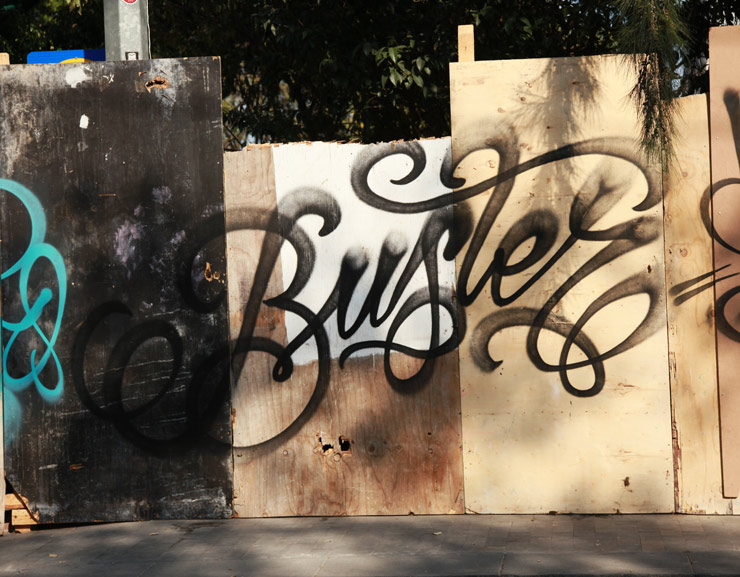
Buster (photo © Jaime Rojo)
As you walk and weave over the chunks of disrupted sidewalks, the local mechanic’s car-repair taking place on the curb is complimented by the smell of stacks of fresh tortillas from the tiny tortilleria. The booming tented markets of witty pop-culture t-shirts, knock-off sneakers, and decorative phone cases are sharing your memory space with the eye-popping magenta, sea foam green, and lemon sherbert yellow hues of huge layered toile netting as quinceañera skirts plumped full of Dior and displayed regally behind full glass windows, shop after shop.
The narrow street in old Centro Historico surges with the sound of a live heavy metal band demonstrating the equipment at a music store at lunch time, and three Argentinian Street Artists (Ever, Elian, and Jaz) are creating plumes of aerosol paint from the opened second floor veranda doors across the street while home-made Judas Priest reverberates over and around the slowly moving bumper-to-bumper traffic.
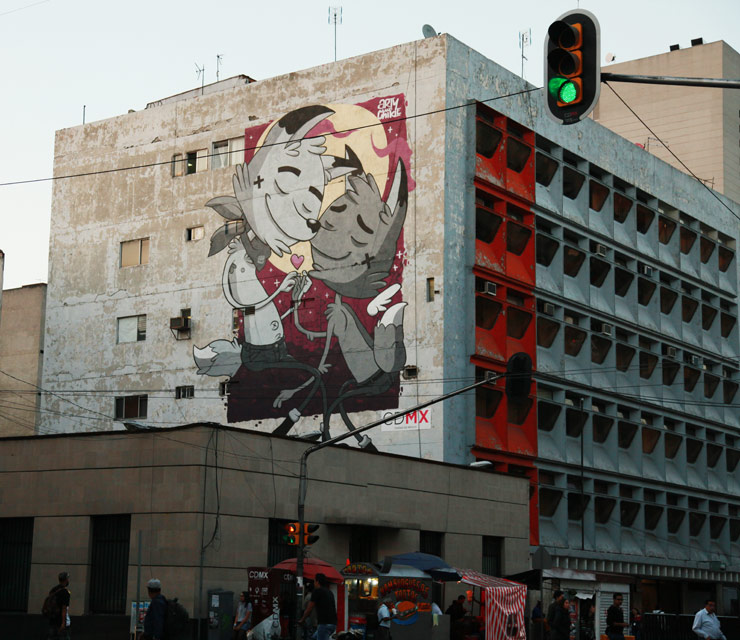
Arty & Chikle. “Only Love”. Street Art MUJAM in collaboration with the Mexico City National Youth Institute for Young Adults. (photo © Jaime Rojo)
Of Mexico, “it’s always high noon and what glows is fuchsia and what’s dead is dead,” said author Henry Miller in his book Black Spring, and some spirit of that rings true here where so many objects and situations you encounter can be amazing and revelatory and yet locals simply roll them in a tortilla and toss it on a hot oiled comal for dinner.
The music options alone can be illustrative of the variety here: Las Madrigalistas are performing holiday classics in the Palacio Bellas Artes, Ricky Martin just played free for 100,000 in the Zocalo, there is an active punk scene that rivals many, a hiphop scene that draws fans from nearby cities, and a reverence for 1980s artists like Depeche Mode and The Misfits, and an almost religious devotion to Morrisey.
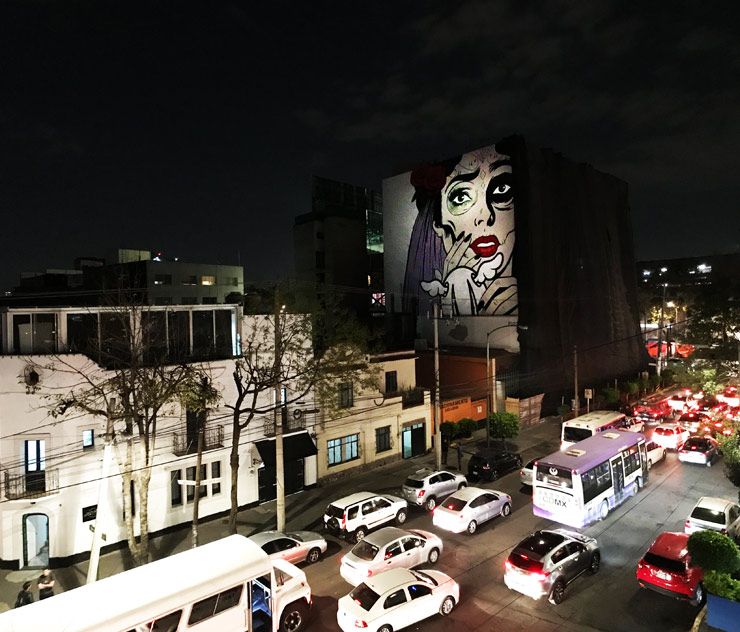
D*Face (photo © Jaime Rojo)
The scale of the murals can be as vast as the city, equally eclectically handmade and warm. Thanks to a rich heritage of mural-making and artists like Orozco, Rivera, and Siqueiros in the last century, the new generation of Mexicanos are interpolating the currents that ripple and wave through a society wedded to fierce independence and tradition. Today it is again rocked by our instant access to information and a global sense of modernity.
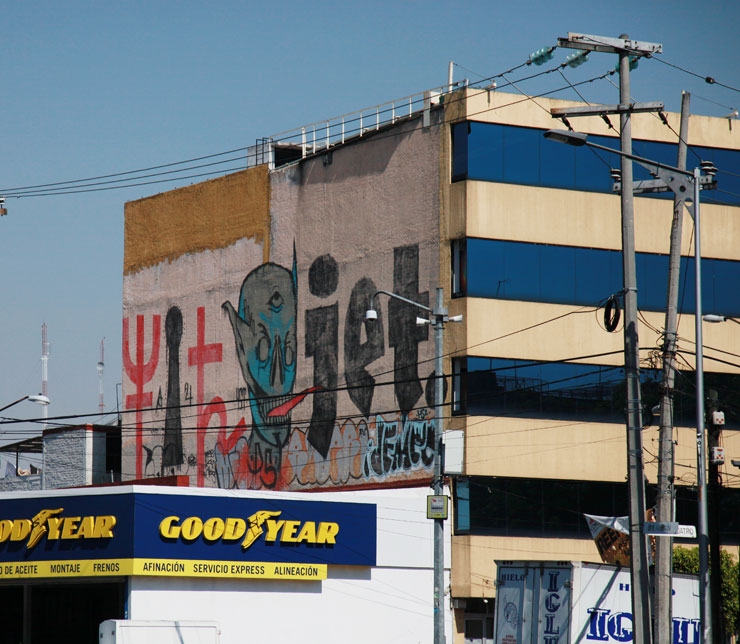
JET (photo © Jaime Rojo)
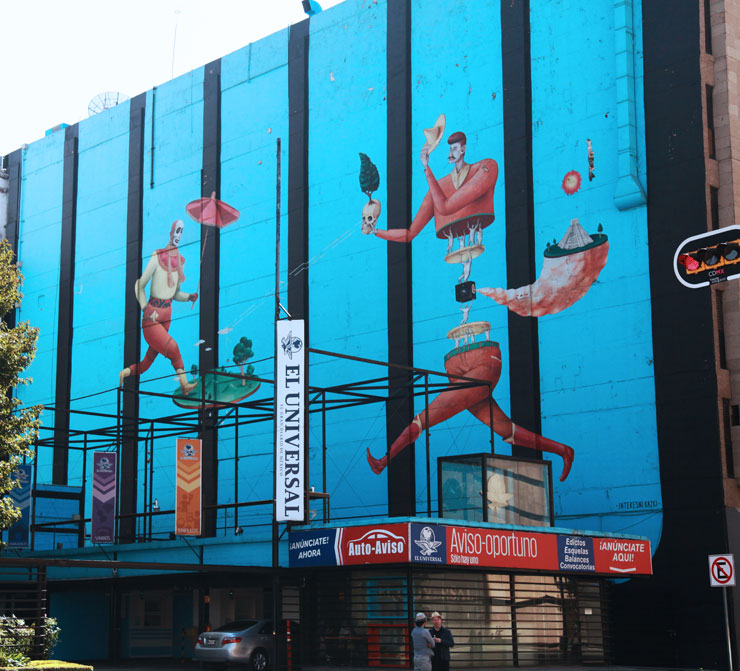
Interezni Kazki. All City Canvas 2012. (photo © Jaime Rojo)
This means that an international Street Art scene in D.F. features not only Mexican alchemists like Saner, Curiot, Farid Rueda, Lesuperdemon, Dhear and Sego (among others) but also invites the English D*Face, Italians Ericailcane and BLU, Belgian ROA, Los Angelianos Retna and El Mac, Polish M-City, Argentian JAZ and German duo Herakut to influence the voice of the street. With a visual wealth of inspiration and disruptive or unusual imagery in play on the street, this still jittery city smiles and confronts you as the year turns, a response that is in flux and fiesta, sorrow and memory, outrage and magic.
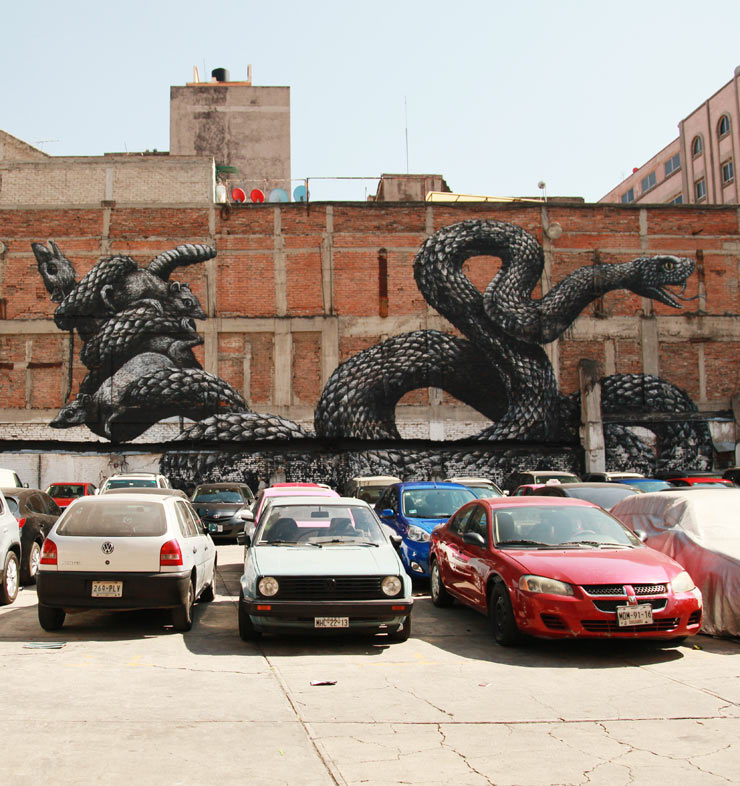
ROA. All City Canvas 2012. (photo © Jaime Rojo)
While traveling through the city with Roberto Shimizu, a central figure in the modern Street Art/mural scene here, and by visiting Street Artists and critical curators and organizers in studios and alternative spaces inside and outside the city, we garnered a greater appreciation for the complexity of the story here. It is distinctly different from the model we’ve seen elsewhere and explains the less showy trajectory that this still organic ecosystem has taken.
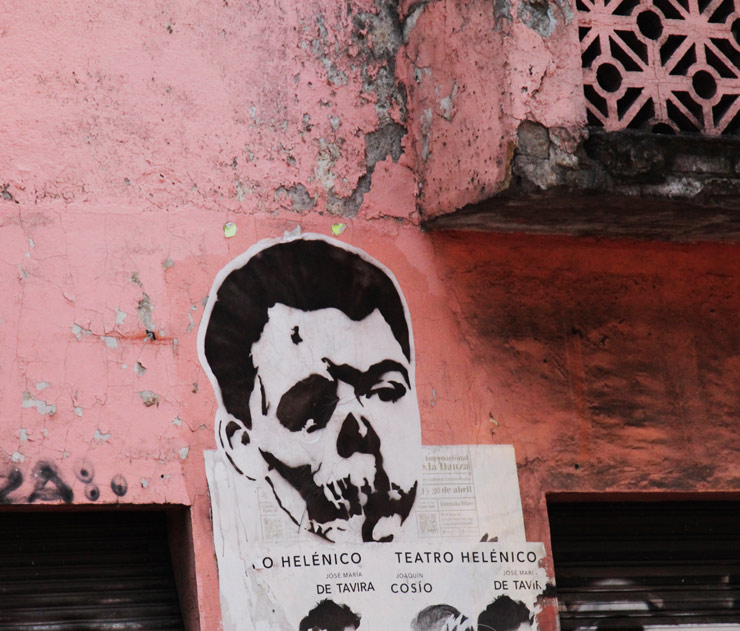
Unidentified Artist (photo © Jaime Rojo)
As in most cities today you’ll find the organic and autonomous quality of works is best represented by one-off, handmade individual pieces of art and stickers throughout neighborhoods, many anonymous. These are not the large scale legal murals that unfamiliar observers sometimes refer to as Street Art. These are still the lifeblood of any real Street Art scene and are often indicators of its truer eclectic nature.
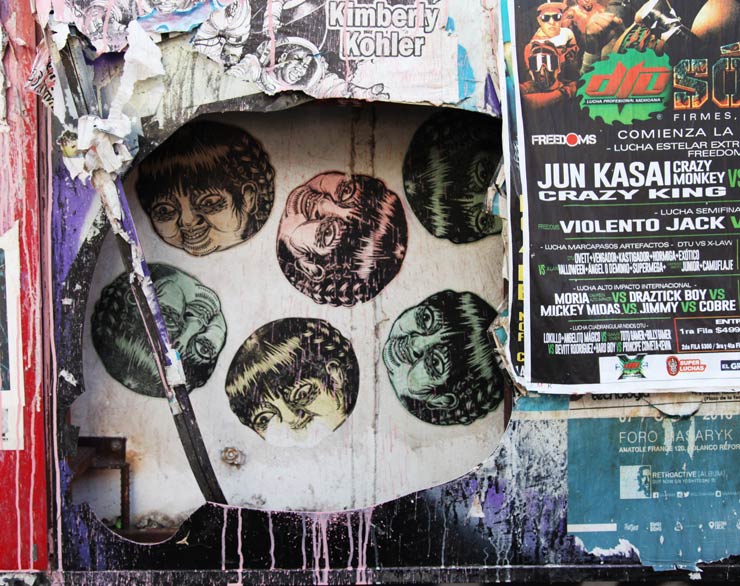
Unidentified Artist (photo © Jaime Rojo)
Maybe because there isn’t a large collector base for this work, or because some brands/marketers have already cheapened its image a bit, but Street Art hasn’t blossomed in the gallery world here to a great extent. Instead, true cultural curators like Shimizu have consistently led it directly to his festival programs or his family’s Mexico City’s Antique Toy Museum (MUJAM), and professors at the Universidad Nacional Autónoma de México (UNAM) are teaching about it to students .
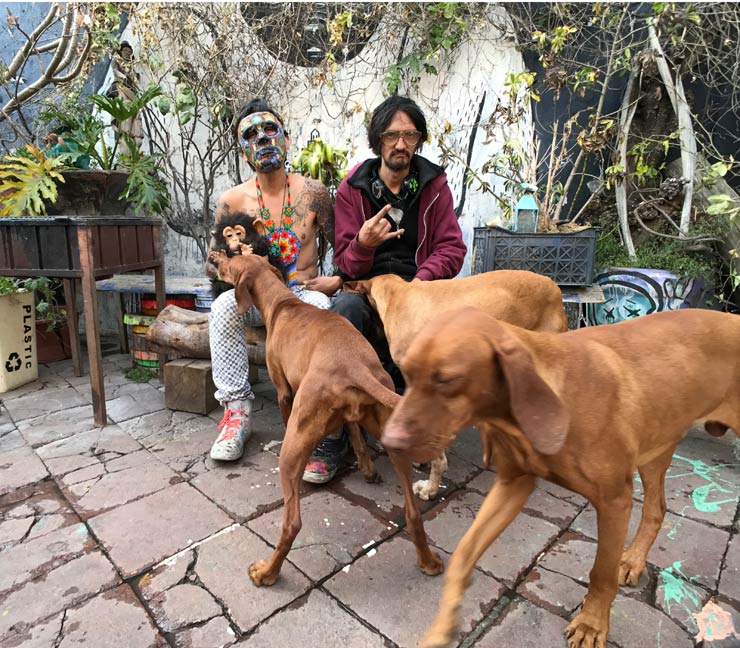
Milamores and El Flaco. La Linea Street Art. Cholula, Puebla. 2012. (photo © Jaime Rojo)
We usually find the true nature of Street Art here is still in the streets – and in the artists community. In the Chulula area of nearby Puebla outside Mexico City, the mysterious renaissance seer named Milamores has quietly curated walls of many local and international artists over the last half decade, offering his compound and dogs for rest and companionship in a supportive artists space. Together with video animation artist Flaco he is presenting Street Art via Virtual Reality experiences that are in tandem with his organically grown mural program. Built on the site of a collapsed building from the 1985 earthquake, the artist/activist collective and community garden Huerto Roma Verde provides classes and workshops on art, sustainable architecture, gardening, and theater and has helped many artists to with mural opportunities as well.
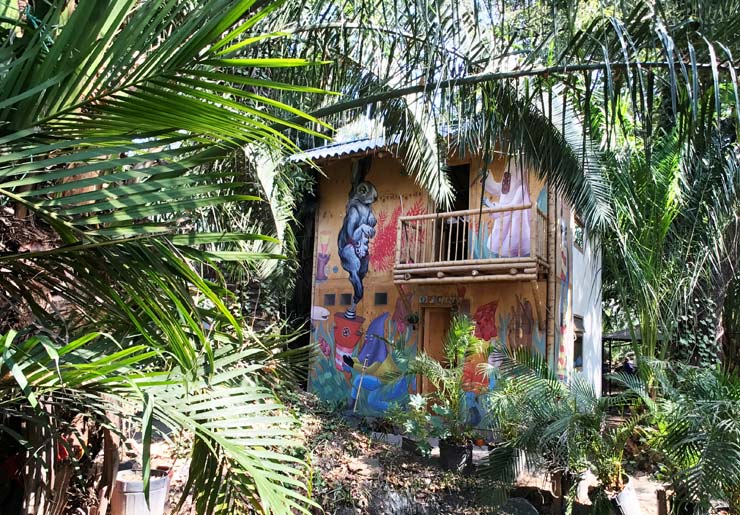
Diana Bama . Martin Ferreira. Huerto Roma Verde. (photo © Jaime Rojo)
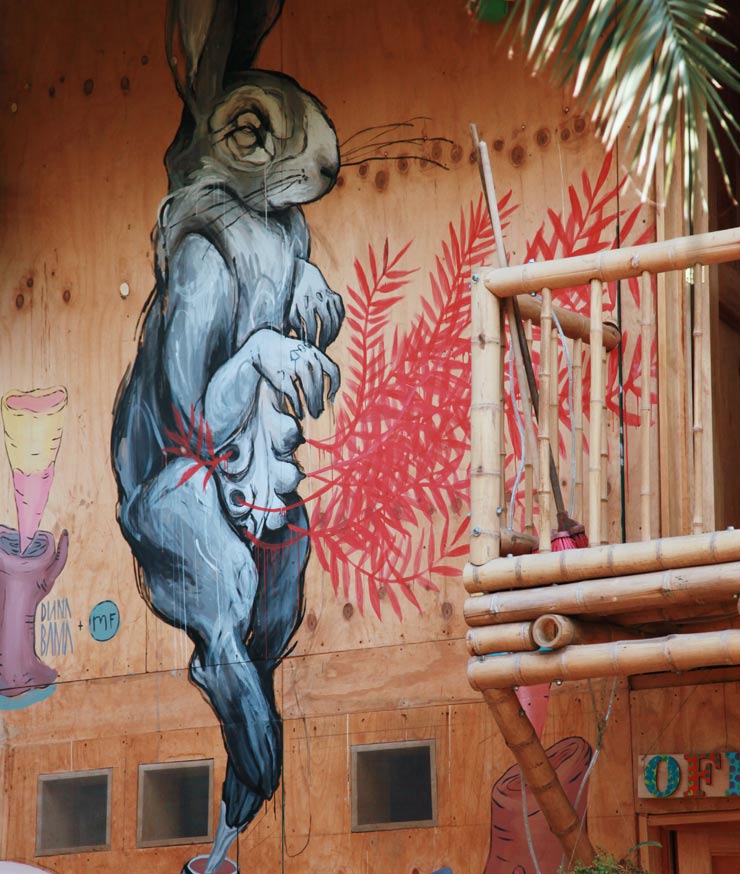
Diana Bama . Martin Ferreira. Huerto Roma Verde. (photo © Jaime Rojo)
As an emblem of the conflicting and harmonious forces at play, we cite the relatively recent mural painted by the Spanish Street Artist Escif on the wall of the Chihuahua housing complex on the Plaza of Three Cultures just north of the city center. Illustrating the privately funded public projects that Street Artists are doing now throughout cities, this one plumbs the unhealed wounds and still unanswered questions of a shocking event of political repression almost 50 years ago here in the plaza designed by Mario Pani.
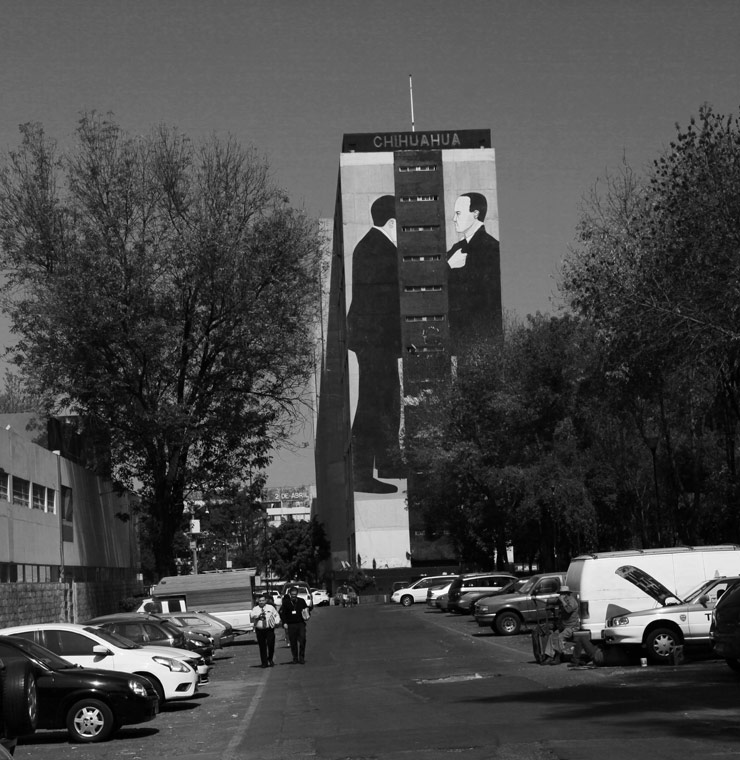
Not only does the plaza physically join together a Spanish colonial church and the remains of a pre-Columbian Aztec temple with the 13 story housing complex, the square is most known today for the October 1968 suppression of a student movement where troops ran directly over the ruins and fired on a peaceful rally and secret police captured and tortured student leaders who were speaking from the balcony. Protest art and public installations about the 2014 Iguala mass kidnapping of 43 disappeared students recall the stories from 1968 today, and many make connections between the events.
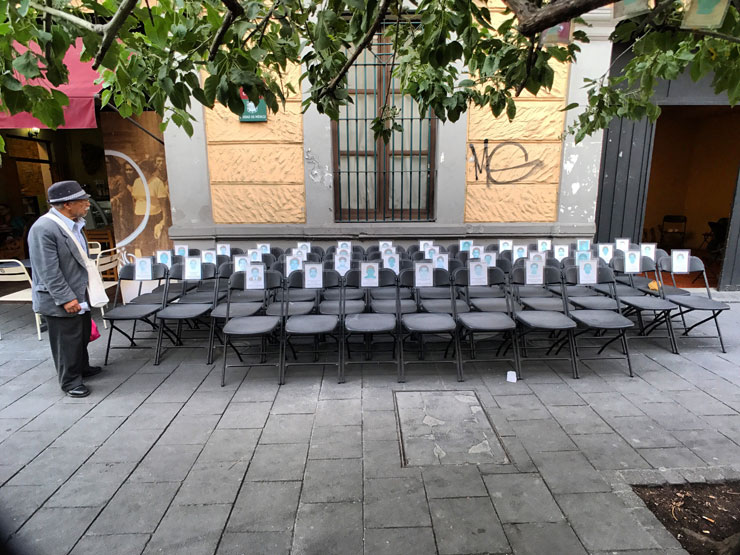
Unidentified Artist. Installation in El Centro Historico for the 43 Desaparecidos. (photo © Jaime Rojo)
Some academics have said the crushing of the student movement was part of a secret “dirty war” by the government to quiet dissent and present a unified Mexico image to the world ahead of the upcoming Olympics, but Shimizu tells us that visiting politicians to Escif’s new wall are pleased with the mural and made a tour by bus with guests to admire it. A monument to the Tlatelolco massacre stands in the plaza memorializing the events, and Escif made a few statements about his interpretation of his mural.
“As in my previous works, there is not a limited meaning in the ‘Chihuahua Mural’, but as many meanings as people try to approach it with,” said Escif to us recently about the two suited figures. He discusses his research into the events that took place, but ultimately he leaves the painting more open to interpretation. “Those two guys painted on the wall can be secretive executives, military officers, corporate people or anybody. That will depend on who sees the wall and his previous experiences.”
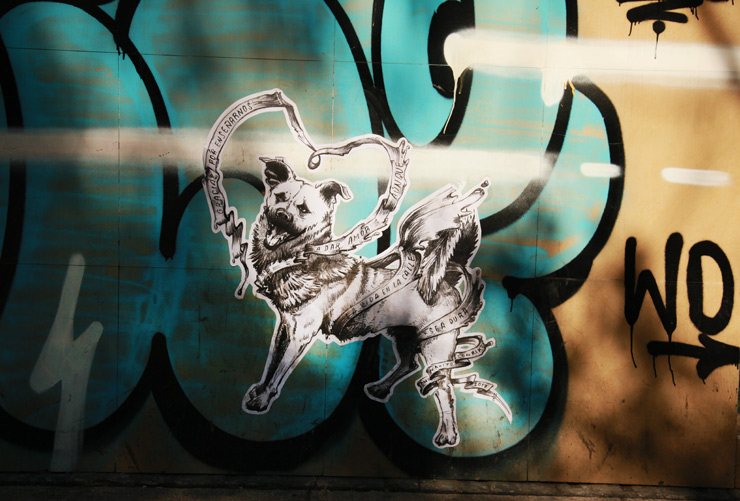
Unidentified Artist (photo © Jaime Rojo)
For visitors to Mexico City looking for the local Street Art or graffiti scene it is helpful to recognize that this moment for a near-global fascination for art in the streets is here also intertwined with a national and local history, cultural pride, and the treasured heritage of indigenous peoples.
While so-called “western” countries may see a rebellious disaffected rage or critique as an overarching narrative for the graffiti and Street Art scene in New York, London, or Berlin, it may be that Mexico City, and Latin America by extension, is also very cognizant of its roots, in love with them even, always infusing new work with a certain respect for their progenitors. For an art practice that is characterized in part for its ephemerality the context of this particular urban environment reminds you of its often remarkable resilience.
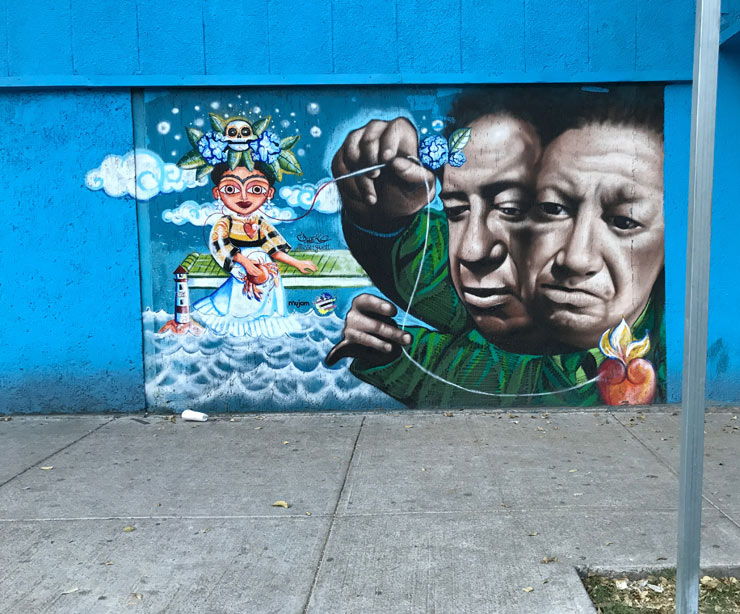
Dueke . Miss1 Guette for MUJAM. (photo © Jaime Rojo)
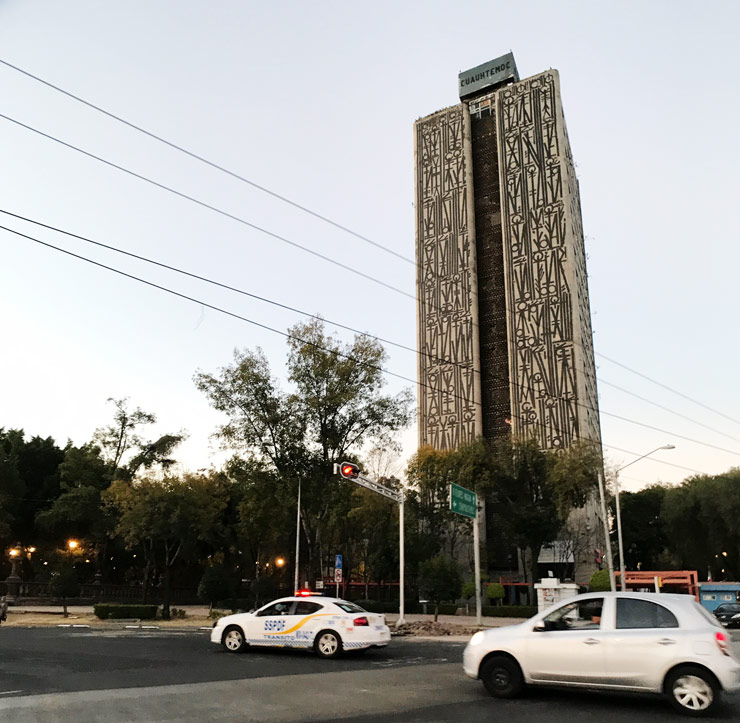
RETNA. The Beauty Project, 2017. (photo © Jaime Rojo)
ROA. La Linea Street Art. Cholula, Puebla. 2012. (photo © Jaime Rojo)
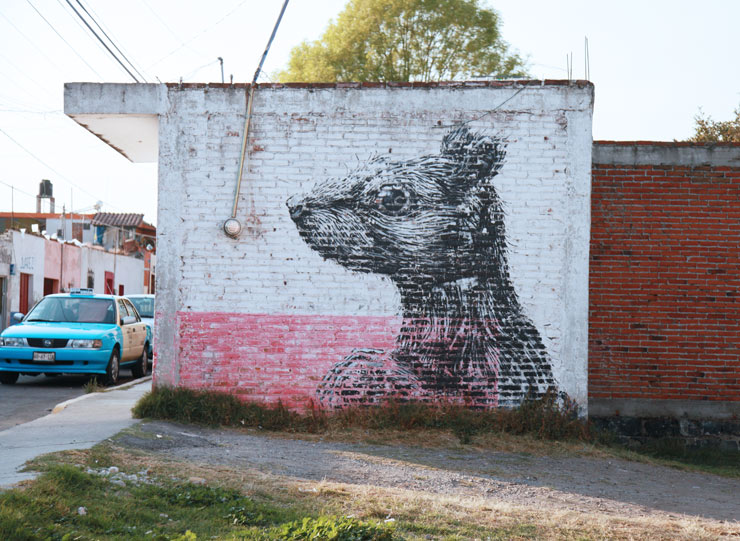
ROA. La Linea Street Art. Cholula, Puebla. 2012. (photo © Jaime Rojo)
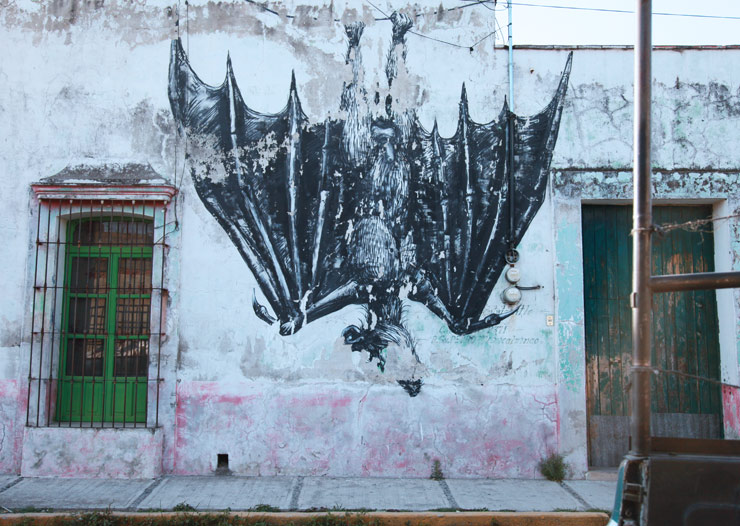
ROA. La Linea Street Art. Cholula, Puebla. 2012. (photo © Jaime Rojo)
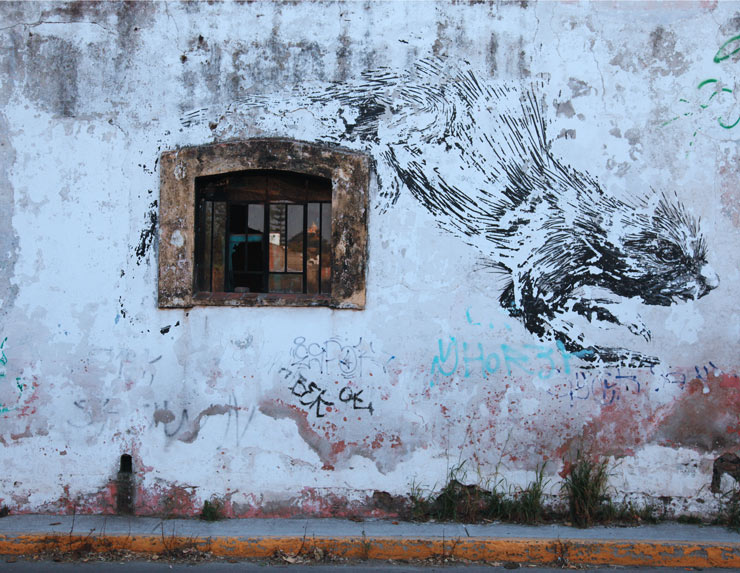
ROA. La Linea Street Art. Cholula, Puebla. 2012. (photo © Jaime Rojo)
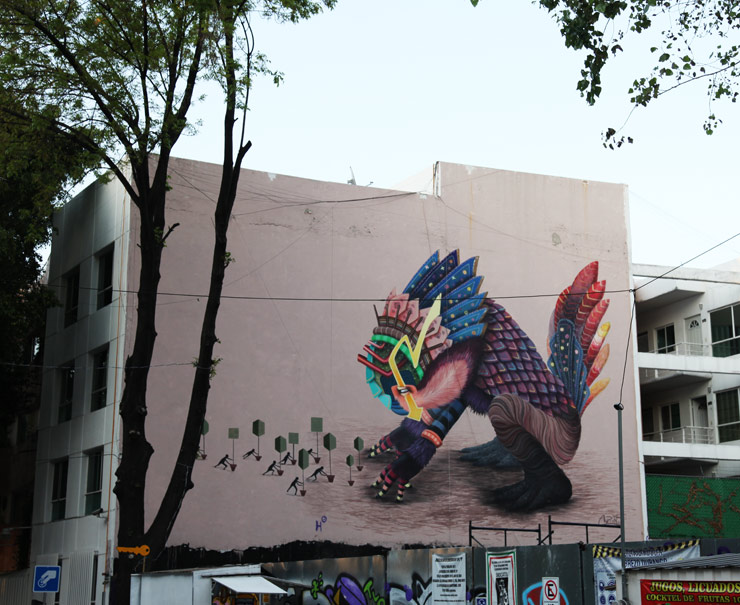
Curiot (photo © Jaime Rojo)
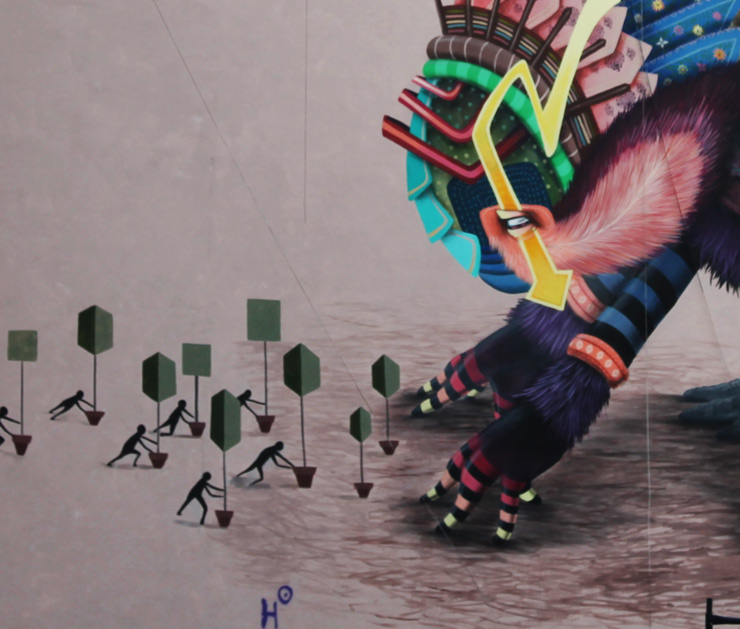
Curiot. Detial. (photo © Jaime Rojo)
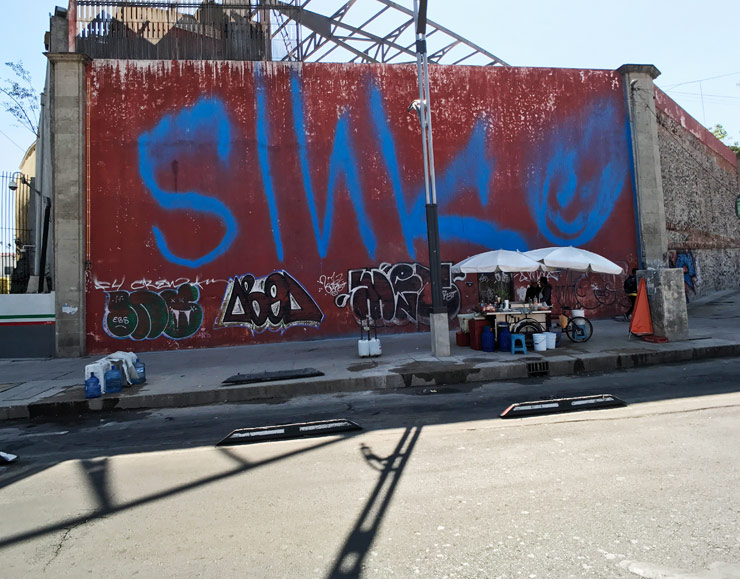
SINKO (photo © Jaime Rojo)
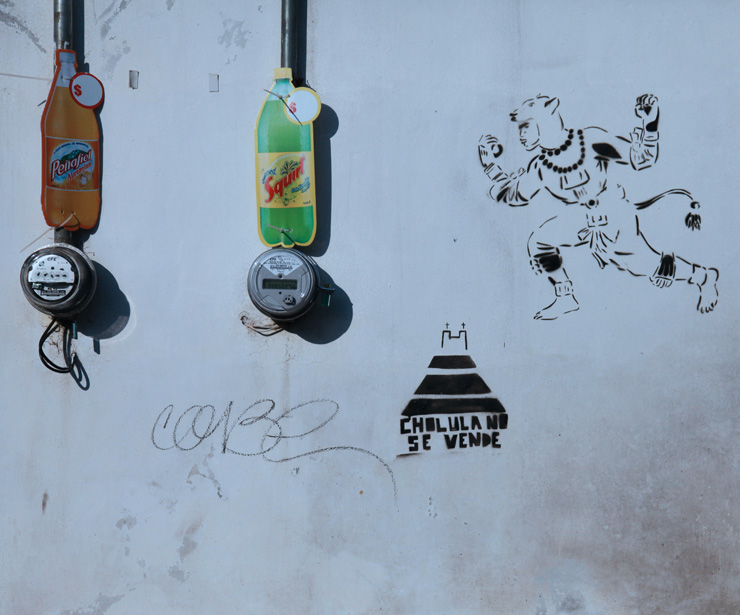
Unidentified Artist (photo © Jaime Rojo)
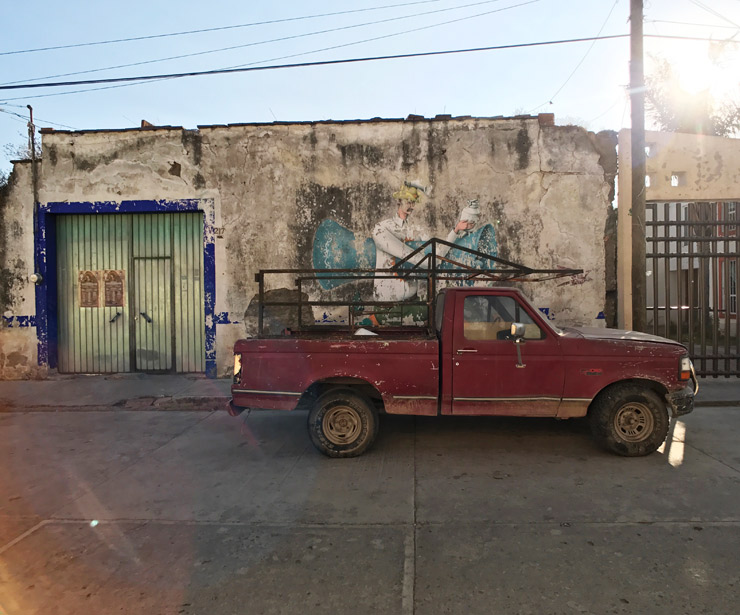
Interezni Kazki. La Linea Street Art. Cholula, Puebla. 2012. (photo © Jaime Rojo)
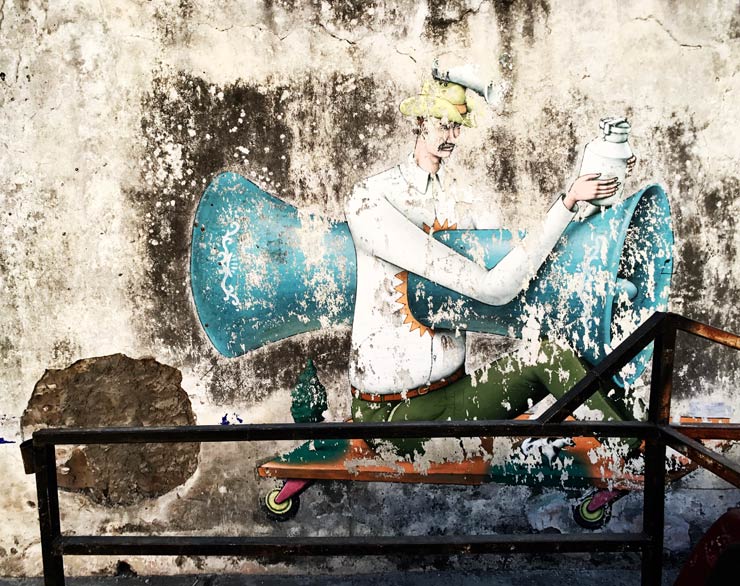
Interezni Kazki. La Linea Street Art. Cholula, Puebla. 2012. (photo © Jaime Rojo)
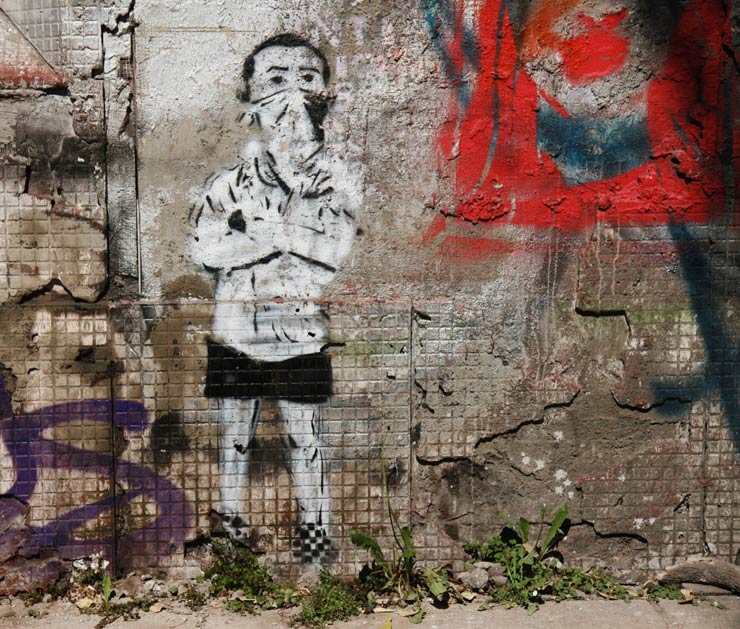
Unidentified Artist (photo © Jaime Rojo)
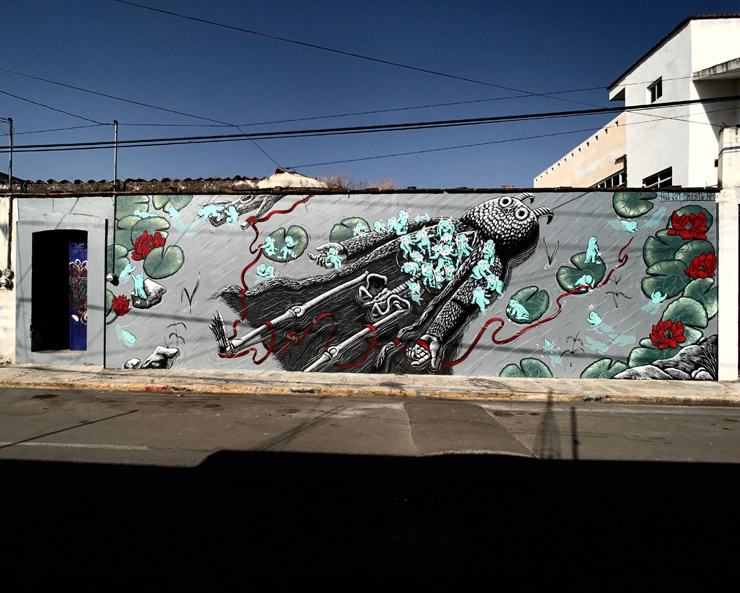
Kill Joy . Mazatl. La Linea Street Art. Cholula, Puebla. (photo © Jaime Rojo)
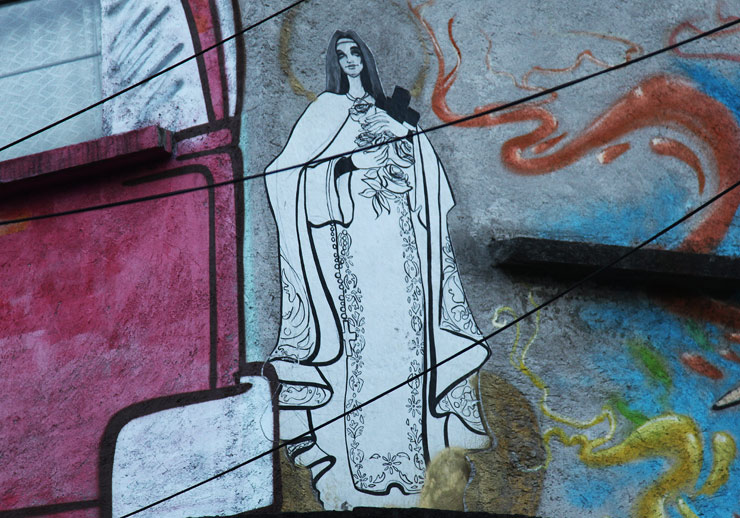
Unidentified Artist (photo © Jaime Rojo)
Fusca . Blast. La Linea Street Art. Cholula, Puebla. (photo © Jaime Rojo)
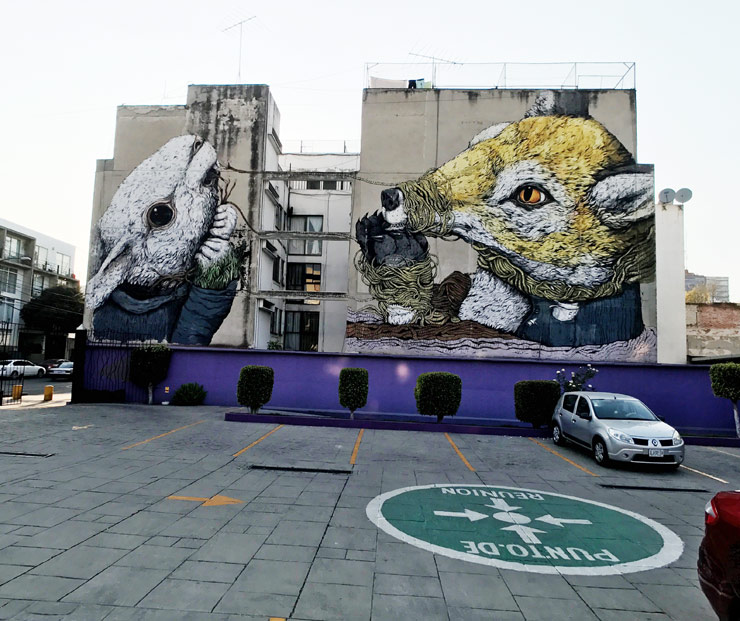
Erica Ilcane. (photo © Jaime Rojo)

This is the first of two articles with BSA in Mexico City in collaboration with UN Berlin, it was originally published on the Urban Nation website, and the project is funded in part with the support of Urban Nation Museum for Urban Contemporary Art (UN) in Berlin.
Read Part II here:
A Street View From Inside the Doors of Mexico City ; Galleries, Studios, Museums, and the Metro
Additional coverage by BSA in Mexico City:
An Unlikely Museum for Street Art? MUJAM is in the MX MIX : BSA X UN X Mexico City: Day 1
Saner, Mexican Muralist and Painter, Studio Visit. BSA X UN X Mexico City: Day 2
Panteón and Watchavato “No Esto No Es Lo Que Fue” Opens In Mexico City
Exploring New Techniques and Processes with Elian, Jaz and Ever in Mexico City
BSA Images Of The Week: 11.26.17 Mexico City Special
This article is also published on the Urban Nation museum website:
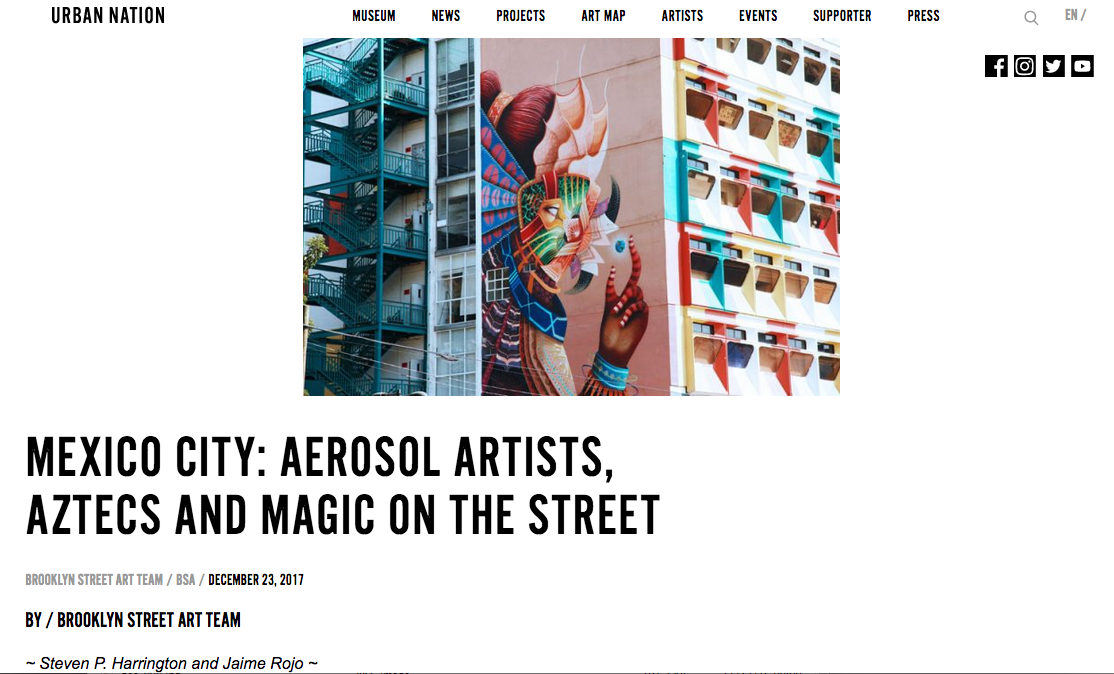
Other Articles You May Like from BSA:
We were just looking at this piece by graffiti writer and mixed media artist Greg Lamarche aka Sp.One, and we were reflecting that art-making and advocating for social/political change can be a one-...
As we approach the end of International Women's Day/Month, we share with you images from the protests that took place in Chihuahua, Mexico marking the day when women all over the world took to the str...
Banksy's "The Girl With A Pierced Eardrum" painted in Bristol's Albion Dock in 2019 has experienced a Covid-19 makeover. Banksy "The Girl with a Pierced Eardrum" Bristol, UK. (photo © Reuters/Reb...
Our weekly focus on the moving image and art in the streets. And other oddities. Now screening : 1. Non-Trivial - Jesse Hazelip2. Banksy Overlooked in Venice3. DEGON 12+1 Project / Contorno U...
The wall at Le M.U.R. in Paris got the Mode2 treatment just ahead of the legislative elections, offering a fine opportunity for the artist to wax politically. He created his message of empowerment on...
 BROOKLYN STREET ART LOVES YOU MORE EVERY DAY
BROOKLYN STREET ART LOVES YOU MORE EVERY DAY